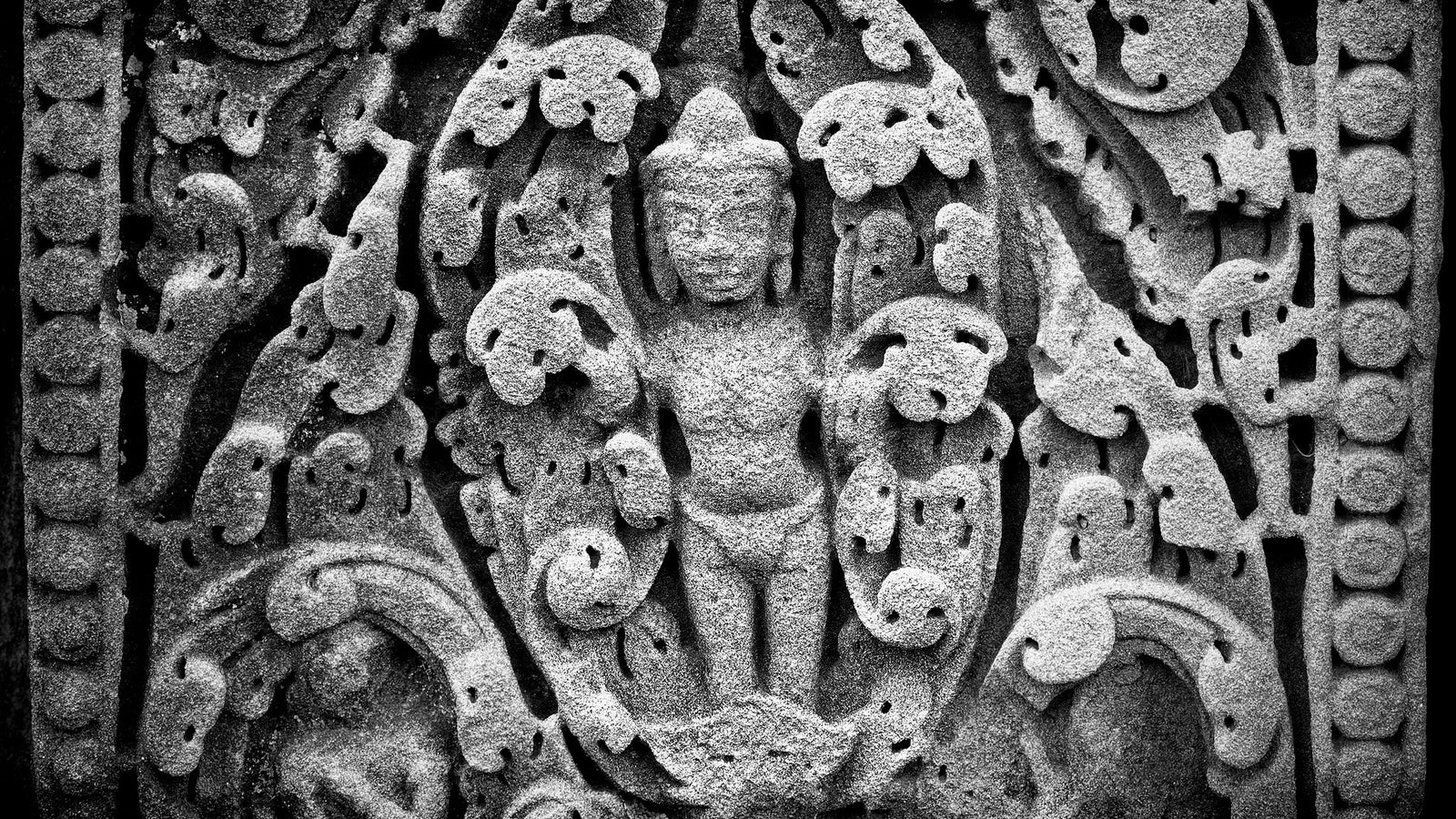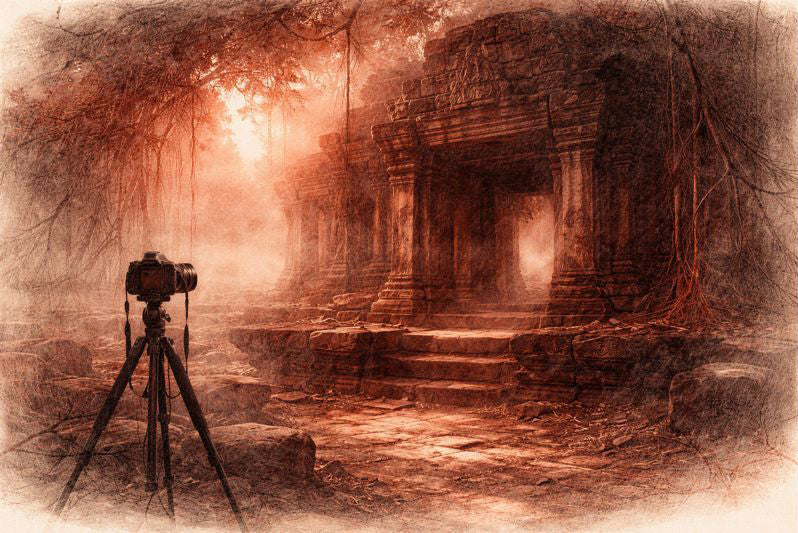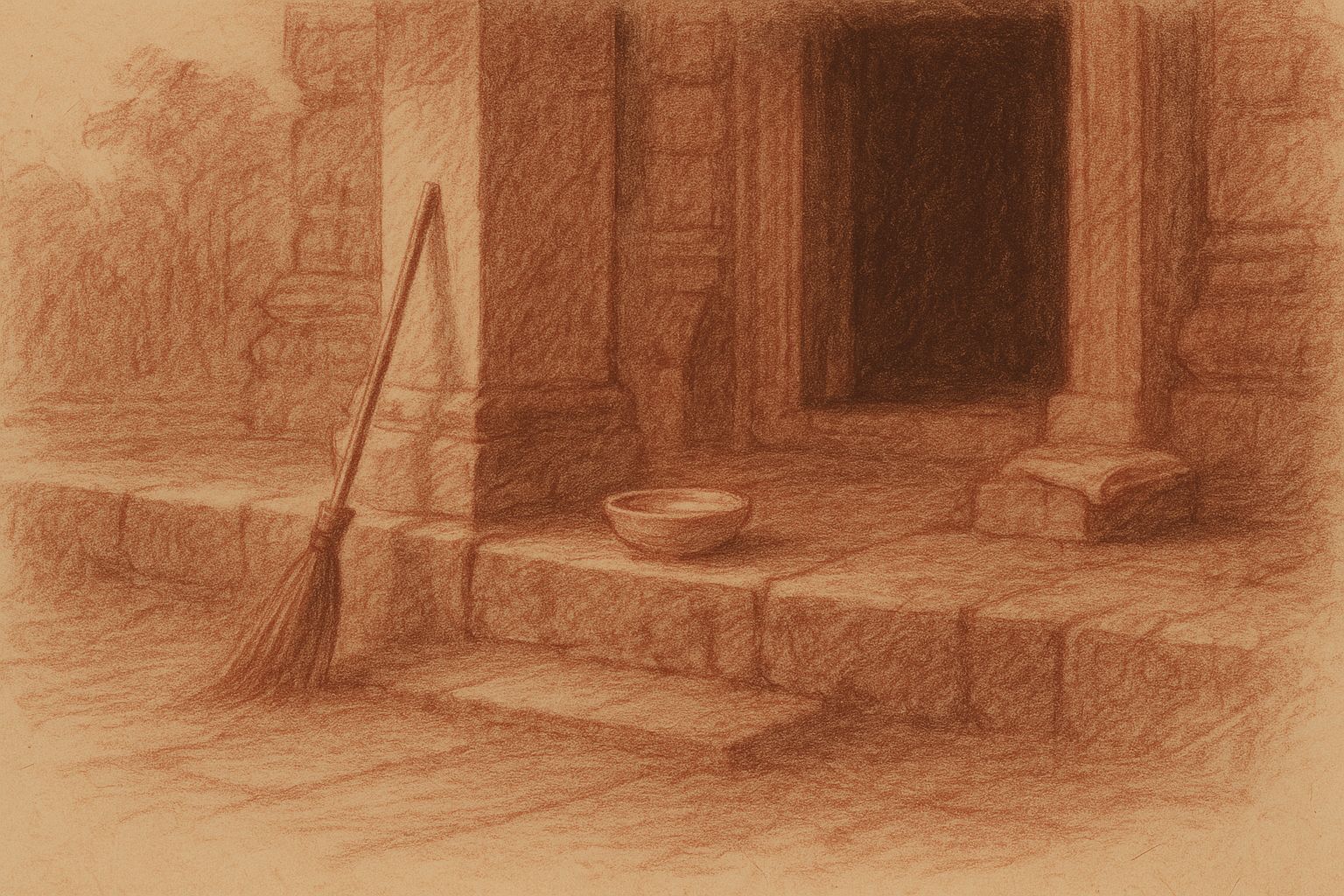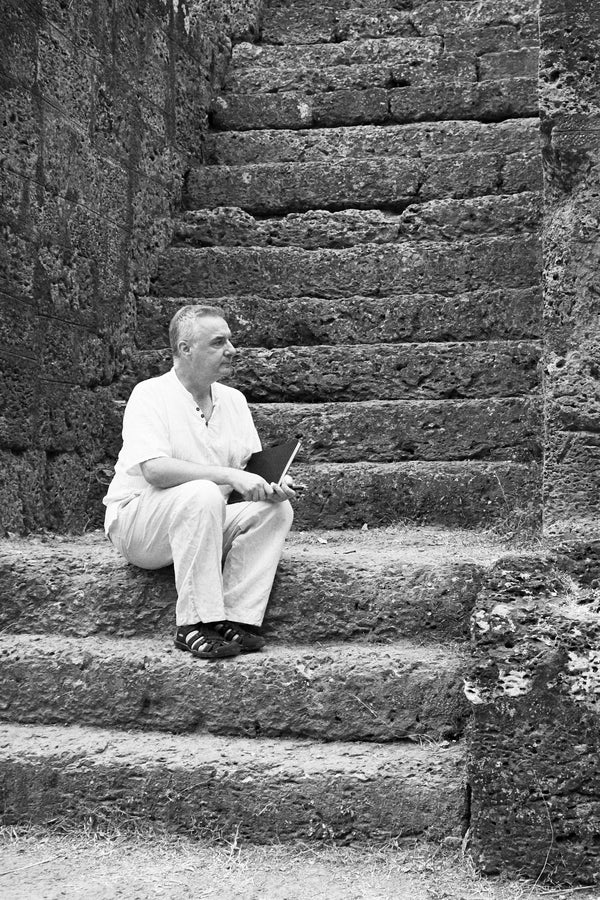Complimentary worldwide shipping on orders over $400 · No import tariffs for most countries
Complimentary worldwide shipping on orders over $400 · No import tariffs for most countries

The Worship of the God as a Child
3 min read
Today, Annie and I visited the gorgeous Banteay Samre Temple to examine the excellent Krishna reliefs, many of which depict tales from the god’s early life.
The Harivamsa, a later appendix of the Mahabharata, deals mainly with the mythological adventures of Shiva and Vishnu. The latter appears in his divine incarnation as Krishna, and sometimes in human incarnation as Rama. From this text the Khmer took only some specific episodes, usually the great cosmic battles between devas and asuras, between good and evil. In Khmer reliefs Krishna is commonly shown on the shoulders of Garuda, the winged divinity and enemy of the asuras and of nagas.
Krishna (the dark one) is the eighth avatar of Vishnu, a direct manifestation of the god himself, the embodiment of love, of the divine joy that destroys pain. His brother Balarama is accepted as the seventh avatar. Legend has it that when Vishnu plucked two of his own hairs, a white and a black one, these entered the wombs of Rohini and Devaki. The white hair became Balarama, of fair complexion, and the black one Krishna, of dark skin. Their presumed father was Vasudeva, brother of Kunti, the wife of Pandu; so, Krishna and Balarama were cousins of the Pandava princes.
As an adult, Krishna appeared as a great sage and advisor to the Pandavas and the Kauravas. Of particular significance was his role as moral and ethical teacher of Arjuna during the ‘Battle of Kurukshetra’, as narrated in the Bhagavad Gita. We’ll discuss these tales at a later date.
So far in my journal, we’ve examined the Khmer reliefs that describe tales of the infancy of Krishna. Stories in the Harivamsa are centred around his uncle Kamsa, who wanted to kill him, and began with the events I describe in The Massacre of all Young Boys.
The Bhagavata Purana, another revered text in Vaishnavism, tells us that, when still a little boy, Krishna was gifted with enormous strength, and, while in the cradle, strangled monsters sent to kill him by his uncle Kamsa. I tell two of these stories in The Destruction of the Cart and the Asura Trinavarta.

Krishna as a Child, Banteay Samre Temple, Angkor, Cambodia
The Khmer narrative and visual emphasis on Krishna’s childhood reflects the medieval interest in the worship of the god as a child, which continues to flourish in India today.
The Harivamsa and Puranas celebrate the pranks of the baby Krishna, while the Ramayana records his actions. They emphasise lila, the beauty of freedom and divine play in the universe, seeing acts that normally would be considered wrong, even scandalous, as joyful and innocent. Much of the behaviour is erotic in nature, but the texts refer to it as krida, ‘play’ or ‘sport’, in a non-judgmental way.
It is this identification of god and child which renders their actions essentially innocent. If the universe is seen as a manifestation of the god’s playfulness, actions that appear wrong may ultimately be part of a larger, holistic law.
In upcoming articles, we’ll explore Khmer reliefs that depict these tales of Krishna’s childhood, tales of the slaying of demons, confrontations with gods, and of playful krida.
You can enjoy more of my images from Banteay Samre Temple by clicking here: My Work at Banteay Samre Temple.
If you enjoyed this article, and you would like to continue to share in my adventures, please sign up for my newsletter below. Since I no longer post on social media, this is the best way to stay up-to-date with my work.
Also in Library

Before the Shutter Falls
3 min read
Before the shutter falls, fear sharpens and doubt measures the cost of waiting. In the quiet hours before dawn, the act of not-yet-beginning becomes a discipline of attention. This essay reflects on patience, restraint, and the quiet mercy that arrives when outcome loosens its hold.

Those Who Keep the Way Open — On the Quiet Guardians of Angkor’s Thresholds
3 min read
Quiet gestures shape the way into Angkor — a swept stone, a refilled bowl, a hand steadying a guardian lion. This essay reflects on the unseen custodians whose daily care keeps the thresholds open, revealing how sacredness endures not through stone alone, but through those who tend its meaning.

Multiplicity and Mercy — The Face Towers of Jayavarman VII
5 min read
A new vision of kingship rises at the Bayon: serene faces turned to every horizon, shaping a world where authority is expressed as care. Moving through the terraces, one enters a field of steady, compassionate presence — a landscape where stone, light, and time teach through quiet attention.
Join My Studio Journal
Receive occasional letters from my studio in Siem Reap—offering a glimpse into my creative process, early access to new fine art prints, field notes from the temples of Angkor, exhibition announcements, and reflections on beauty, impermanence, and the spirit of place.
No noise. No clutter. Just quiet inspiration, delivered gently.
Subscribe and stay connected to the unfolding story.

Join My Studio Journal
Receive occasional letters from my studio in Siem Reap—offering a glimpse into my creative process, early access to new fine art prints, field notes from the temples of Angkor, exhibition announcements, and reflections on beauty, impermanence, and the spirit of place.
No noise. No clutter. Just quiet inspiration, delivered gently.
Subscribe and stay connected to the unfolding story.
